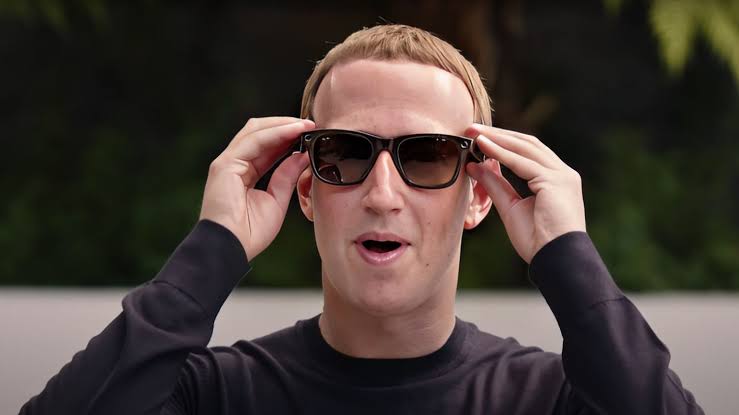According to Mark Zuckerberg of Meta, holographic-display smart glasses will gradually replace mobile phones as the main means of communication and computing for people. Artificial intelligence and open source were among the many issues that the billionaire tech tycoon discussed in a recent interview with YouTuber Kane “Kalloway” Sutter. However, when host Kalloway questioned Zuckerberg about Meta’s most interesting upcoming product, he enthusiastically endorsed a pair of face-mounted glasses that have cameras, microphones, speakers, and a full field-of-view (FOV) holographic display.
Pundits in the techverse and the advertising industry have generally had a field day making fun of Zuckerberg and Meta for their decision to change their name from “Facebook,” the company that created the social media platform, to “Meta,” the firm that is… developing the metaverse. However, it’s clear that Zuckerberg believes smartglasses will be the next big thing and that smartphones are nearing their end. In the same way that smartphones didn’t totally replace desktop or laptop computers, he clarified to Kalloway that wearable holographic displays wouldn’t either.
However, Zuckerberg thinks that smartglasses will become helpful enough for most people to keep their phones in their pockets most of the time with the right hardware and software. But the business must first advance the technology. Zuckerberg said that Meta is considering three distinct products. There will be three different types of glasses: a “displayless” model with speech AI (which is currently available in the Ray-Ban Meta), a “little heads-up display” with partial holography, and a “premium version” with a holographic display that covers the entire field of vision.
Meta aims to close the gap between bulky headgear more appropriate for virtual reality (VR) than augmented/mixed reality (A/MR) and Ray-Ban Meta, a device without a display. Full field of view (FOV) holographic glasses, in Zuckerberg’s opinion, would enable smooth real-time communications, informational overlays, a heads-up display like to that of a video game or military operator’s equipment, and more. Furthermore, he emphasized that they wouldn’t be significantly bulkier than standard glasses: “They’re unmistakably glasses, they’re not a headset.”Zuckerberg also talked about the reasons why people would choose to use glasses to obtain information rather than simply glancing at their cellphones when necessary. According to him and host Kalloway, it’s disengaging to continuously check our devices for information pertinent to our current circumstances. Alternatively, it’s a habit that “shatters your presence,” in Kallaway’s words. Using smartglasses as a neural interface’s primary display is a further intriguing use case. Elon Musk’s Neuralink is now the most well-known large-scale neural interface, but installing it involves an intrusive operation.
In Zuckerberg’s words: “I believe that the majority of people won’t want something inserted into their brains.” Right now, Meta is developing a neural wristband. Rather than measuring data straight from the brain like a brain computer interface does, this would be a wearable device that measures and interprets nerve signals. According to the theory, Meta’s neural wristband may translate almost imperceptible bodily movements—like a finger twitch—into digital communications. When paired with Meta’s experimental full FOV holographic displays, this has the potential to transform the physical world into an infinite Web3 workspace and play area.
Zuckerberg informed Kalloway that Meta was taking its time to get things perfect when asked when we should expect to see these products, but the response so far has been really positive: “We’re getting close to launching the full holographic glasses prototype. We will not be selling it in large quantities. Instead of focusing on selling the prototype, we’re constructing the complete consumer version. However, and this is really exciting, we’re going to start showing the prototype to folks. The response from everyone I’ve shown it to thus far has been ecstatic

